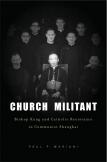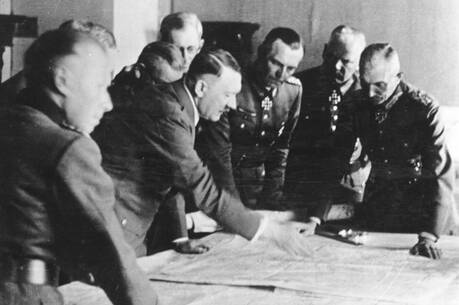Recalcitrant Catholics
Paul Mariani, S.J., has given us a first-rate product here. All scholars of modern Chinese Christian history are in his debt, as are all scholars of church history in any part of the world. Mariani’s strategy is simple: To tell the story of the Communist attempt to subdue the recalcitrant Catholic church in Shanghai in the years after the Chinese Communist forces won the civil war of 1945-49.
That chain of events was one of the most important of the new regime’s goals in the campaign to gain control systematically of all organizations in the key city of Shanghai, especially those with foreign links. Eventually they succeeded, but not before the Shanghai Catholics had put up a determined and surprisingly effective resistance.
Mariani was able to purloin some Public Security Bureau documents from the Shanghai municipal archives and managed to get copies out of China. These documents enabled him to trace precisely the growing frustration of the Communists with the hard-core Catholic resistance, and the final steps, from 1955 to 1957, to dismantle the previous Catholic structures and replace them with a rather hollow organization, the Catholic Patriotic Association.
This is a dramatic story, of course, and Mariani recounts it well, including its inherent drama. There are militant Catholic Youth and Legion of Mary members organizing public demonstrations and operating underground printing presses. There are young priests brutally martyred, sparking renewed Catholic resistance. And there is, most of all, the beatific but unyielding figure of Bishop Ignatius Kung Pinmei (later Cardinal Kung), who was at the center of events during 1949 to1955, from his appointment as Bishop of Shanghai to his incarceration by the authorities.
Kung was a key figure. As the first Chinese bishop in Shanghai and a native son, he was wildly popular and revered by Catholics. His moral authority during these years and the years after his imprisonment was never shaken. After being held in jail for five years, Kung was convicted in 1960 and formally sentenced, along with several other Chinese and foreign priests.
Mariani reminds us that the intense hostility between the Communist Party and the Catholic Church that had built up since the 1920s was very real. The Holy See, under both Pius XI and Pius XII, was unswervingly anti-Communist, a position that seems extreme today but was basic. Against this background was the reality of Chinese Communist troops and cadres during the late 1940s, clashing with rural Catholic leadership over land reform in areas where many villages were largely Catholic and much of the land was owned by the church or wealthy Catholic landlords. So during the last stages of the civil war, when the Communists were obviously winning, the Vatican issued orders directing all Catholics not to cooperate with the Communists, under threat of excommunication. And the Vatican’s representative, the papal nuncio Antonio Riberi, openly urged non-cooperation. This egregious behavior earned him rapid expulsion by the new regime, but one can see the depth of the mistrust and suspicion on both sides of this political divide.
Several aspects of the book deserve mention as interesting sidebars to Mariani’s very capable narrative. One is how at this time in history, almost 400 years after the first Jesuits came to China, it remained obvious that the church in China was still overwhelmingly Western in composition and especially in its leadership. There had been no Chinese bishops consecrated from 1689 to 1926, when two were appointed. But that practice did not permeate the church even by the 1950s. The fact is that the Protestants did a much better job than the Catholics in devolving power to “native agency.”
This fine book also shows that substantial documentation exists on this kind of politically sensitive topic. Mariani found, mostly by chance, Public Security Bureau and other Chinese records in China that enrich his analysis and support his arguments. And it seems an act of providence that he was able to take copies of these out of China. But he also found new material in archives outside of China—in the personal papers of American priests, for example, who were in Shanghai in the early 1950s that are now kept in the headquarters of the California province of the Jesuits.
Finally, this work is still relevant to issues in China today. The present regime has certainly discussed within its own top circles the ongoing thorn in its side constituted by recalcitrant Catholics, and although the position of lay leaders and Catholic clergy is somewhat more secure than in the 1950s, it is by no means free from the sort of harassment and even violence that was the norm almost six decades ago. Moreover, the mentality of the regime is almost unchanged since then. The issues of those years are still with us today, especially the topic of the consecration of bishops.
This article also appeared in print, under the headline “Recalcitrant Catholics,” in the March 25, 2013, issue.








